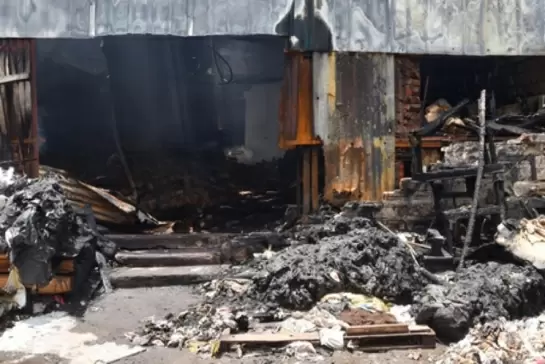Fires leading cause of forest degradation in India: Report
09-October-2018
Even as India has managed to increase its forest cover to over 20 per cent of its total geographical area, forest fires are a leading cause of degradation of the green cover in the country, a report said on Tuesday.
Regeneration is either inadequate or absent in about 45 per cent of all forest areas and about 95 per cent of all forests inventoried show some signs of degradation.
The report "Strengthening Forest Fire Management in India", jointly prepared by the Ministry of Environment, Forest and Climate Change and the World Bank, discusses policies on forest fire prevention and management at the national, state and local levels, underscoring the need for a comprehensive national policy and guidelines.
It provides recommendations on five broad themes -- policy, institutions and capacity, community engagement, technology, and data and information and looks at national and international best practices in forest fire prevention and management.
According to the Fifth Assessment Report of the Intergovernmental Panel on Climate Change, the annual carbon emissions from forest fires globally range between 2.5 billion to 4 billion tonnes of CO2, adding large volumes of greenhouse gases to the atmosphere.
The report was released by Union Minister for Environment, Forest, and Climate Change Harsh Vardhan at an event here.
Speaking at the event, Vardhan said: "Forest fire management is part of our long-term vision for sustainable forest management. It is also crucial for sustaining progress towards our global pledge of creating additional sinks of 2.5 billion to 3 billion tonnes of CO2 stored in its forests by 2030."
"The new study will provide critical inputs for the preparation of government of India's National Action Plan on Forest Fire Prevention and Management," he added.
The report analyses patterns and trends of forest fires in India.
While the findings of this study indicate that forest fires occur every year in almost every state in India, some districts have been found to be more vulnerable than others.
In fact, just 20 districts (mostly located in the northeast) accounts for over 40 per cent of all forest fires detected between 2003 and 2016.
Similarly, the top-20 districts (mainly in central India) account for about 48 per cent of the total fire-affected areas, while having just 12 per cent of the country's forest cover in the year 2000 and 7 per cent of its land area.
"Forest fires are a challenge across many countries. They lead to the loss of lives and livelihoods for people directly dependent on forest produce. This report discusses policies on forest fire prevention and management and underscores the need for better fire prevention practices and a well-equipped and trained workforce to fight fires," World Bank Country Director in India Junaid Ahmad said.
Good forest management is built on good knowledge.
Today, many states in India are trying out innovative solutions for fire prevention and management.
Using satellite data, Madhya Pradesh was the first state to develop a SMS-based system to alert field staff about active forest fires in their area.
Odisha has pioneered the use of fire suppression equipment and states like Mizoram, Tripura and Madhya Pradesh have effectively involved the community in preventing forest fires.
States can learn from each other's experiences to make these systems more effective, the report suggests.
"We recommend that a formal mechanism for knowledge sharing between states should be established so that states can learn from each other," Urvashi Narain, Lead Economist, and Pyush Dogra, Senior Environmental Specialist with the World Bank, said.
Both are the lead authors of the report.- IANS
Mahagathbandhan Likely to Announce Tejashwi Yadav as CM Face Ahead of Bihar Polls
IndiGo Flight from Kolkata to Srinagar Makes Emergency Landing in Varanasi
Saudi Arabia Ends Kafala Sponsorship System, Benefiting 13 Million Foreign Workers
Satya Nadella’s Pay Soars to $96.5 Million in FY25 as Microsoft’s AI Boom Lifts Profits
Dalit Youth Abducted, Assaulted, and Forced to Drink Urine in Madhya Pradesh’s Bhind









